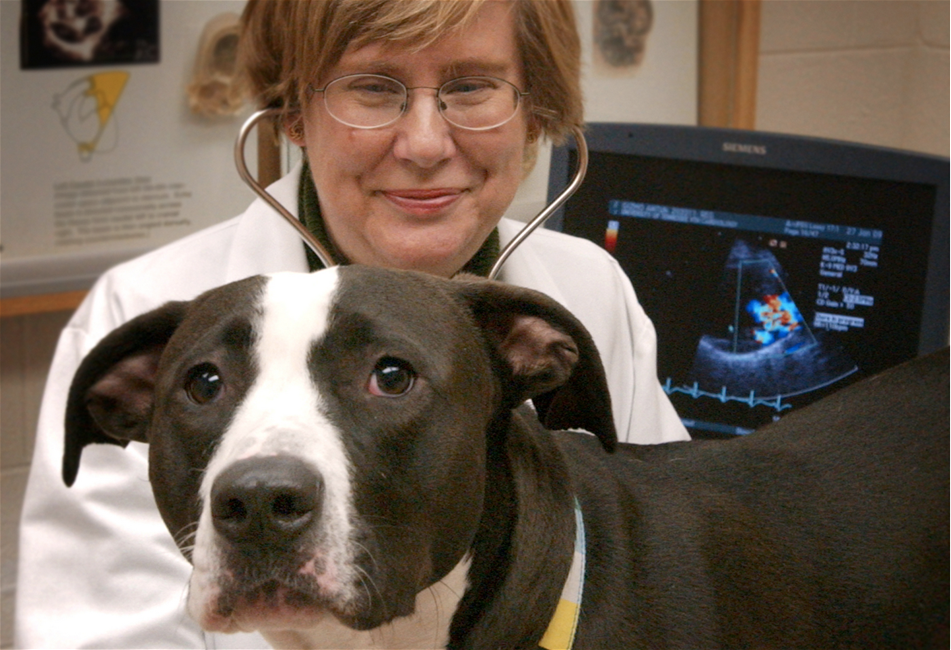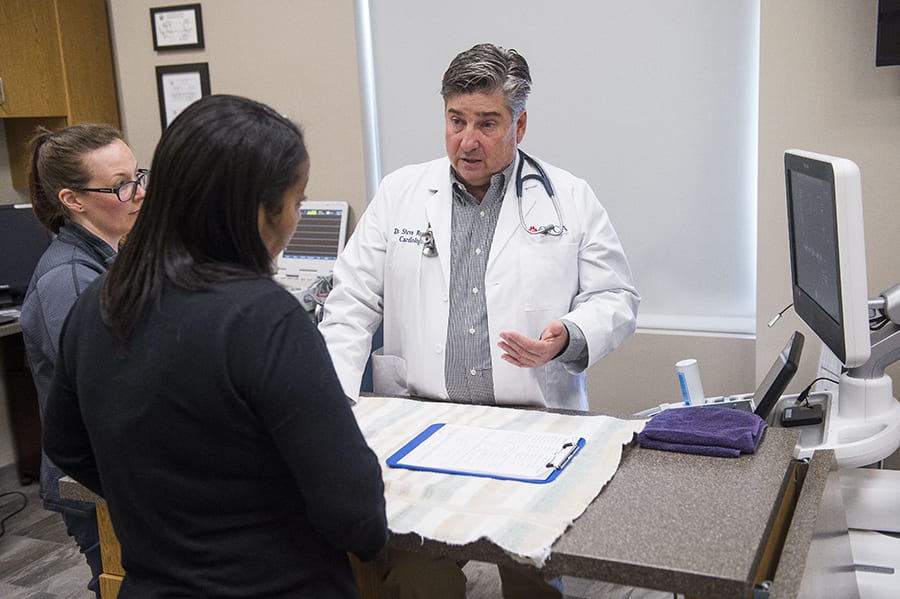How CT Scans For Animals Help Vets Detect Internal Issues Early}
The Role of Ultrasound and CT Scan in Modern Veterinary Practices: Insights From Experienced Professionals
In modern vet practices, ultrasound and CT scans substantially improve analysis abilities. These imaging methods give crucial insights into animal health and wellness, leading therapy choices. Experienced experts recognize the distinct benefits of each technique. Ultrasound supplies real-time analyses, while CT checks provide complex physiological details. Understanding their applications and roles increases crucial concerns about their influence on individual results and the future of veterinary diagnostics. What understandings can be gained from their combined usage?
Understanding Ultrasound in Veterinary Medicine
Ultrasound is an essential analysis device in vet medicine, using a non-invasive method to picture inner structures. This imaging technique uses high-frequency sound waves to create real-time photos of organs and tissues, enabling vets to evaluate problems without surgical treatment. Usual applications consist of evaluating the heart, liver, kidneys, and reproductive body organs, along with keeping an eye on pregnancies.The treatment is relatively fast and can be carried out in numerous settings, making it an accessible choice for vets. Unlike radiography, ultrasound supplies comprehensive details regarding soft cells and blood flow, which is crucial for accurate diagnoses.Veterinary professionals rely on ultrasound to detect problems such as growths, cysts, and liquid build-up. Its ability to lead biopsies and various other treatments better enhances its energy in professional method. By offering a efficient and safe method to analyze inner anatomy, ultrasound has ended up being a keystone of contemporary veterinary diagnostics.
The Benefits of CT Scans for Animal Diagnostics
CT scans deal substantial benefits in vet diagnostics by offering improved accuracy in identifying inner problems (CT Scans For Animals). As a non-invasive imaging strategy, they ensure the safety and comfort of pets during assessments. Additionally, CT scans promote a comprehensive assessment of inner structures, enabling much more reliable therapy preparation
Improved Diagnostic Accuracy
Developments in imaging technology have actually substantially enhanced diagnostic precision in vet medication, especially with making use of CT scans. These scans offer detailed cross-sectional photos of a pet's internal structures, permitting vets to determine abnormalities with precision. The high resolution and three-dimensional capacities of CT imaging promote the detection of problems such as lumps, fractures, and interior bleeding that could be missed with conventional imaging methods. In addition, CT scans can assist in pre-surgical preparation by using a complete view of anatomical relationships. This level of information not just enhances the precision of medical diagnoses but also aids in customizing effective therapy strategies. The integration of CT modern technology right into vet practices is changing the landscape of pet health care, enhancing outcomes for people.
Non-Invasive Imaging Method
The intro of non-invasive imaging techniques has changed animal diagnostics, with CT scans arising as a prominent device in veterinary methods. These scans give high-resolution, cross-sectional photos of an animal's interior frameworks, permitting veterinarians to examine intricate conditions without the need for invasive treatments. The advantages of CT scans include their capacity to spot tumors, cracks, and inner bleeding with amazing precision. Additionally, they facilitate the assessment of soft tissues and body organs, improving analysis capacities. The speed of CT scanning makes it possible for fast decision-making, which is vital in emergency situation scenarios. By reducing stress and pain for the animal, CT scans add to an extra gentle technique to diagnostics, inevitably enhancing therapy outcomes and advancing vet treatment.
Comprehensive Internal Assessment
An extensive inner assessment is crucial for precise medical diagnosis and efficient therapy in veterinary medicine. CT scans offer significant benefits in this respect, giving comprehensive cross-sectional photos of an animal's interior frameworks. This advanced imaging method enhances visualization of complex physiological regions, enabling veterinarians to recognize problems such as growths, fractures, and inner blood loss with greater precision. On top of that, CT scans assist in the assessment of conditions that may be testing to detect with standard methods. The rate and accuracy of CT imaging likewise add to prompt interventions, improving client results. As veterinary methods significantly integrate CT technology, the advantages of considerable internal analyses come to be noticeable, strengthening the significance of this device in modern vet diagnostics.
Comparing Ultrasound and CT Imaging Techniques
While both ultrasound and CT imaging offer crucial duties in veterinary diagnostics, each method uses distinct benefits and limitations that can affect professional decision-making. Ultrasound is particularly valued for its real-time imaging capacities, enabling veterinarians to observe dynamic physical procedures. This method is non-invasive, mobile, and does not entail ionizing radiation, making it a safer choice for both pets and clinicians. Ultrasound might have constraints in visualizing particular physiological frameworks or deep tissues.Conversely, CT imaging offers comprehensive cross-sectional sights of the body, allowing for specific localization of problems. It masters examining facility organs and structures, particularly in the thorax and abdominal area. Nevertheless, CT scans need sedation or anesthetic in lots of instances and entail direct exposure to ionizing radiation. Eventually, the choice between ultrasound and CT relies on the specific professional circumstance, the area of interest, and the necessity of the analysis demands.
Instance Researches: Effective Diagnoses Through Imaging
Instance researches show the considerable improvements in diagnostic accuracy achieved via innovative imaging technologies like ultrasound and CT scans in veterinary practices. These developments not just boost the discovery of various conditions however likewise facilitate efficient and prompt treatment strategies. Evaluating details cases can highlight the transformative influence of these imaging strategies on vet medicine.
Analysis Precision Improvements

Imaging Technology Advancements
As veterinary imaging innovation continues to advance, its influence on diagnostic capabilities becomes progressively obvious. Current case research studies highlight the effective application of advanced ultrasound and CT check methods in recognizing complicated conditions. As an example, a veterinary clinic utilized high-resolution CT scans to diagnose a rare kind of lung cancer cells in a pet dog, which conventional imaging had missed. An ultrasound assessment revealed an abdominal mass in a feline, triggering timely surgical treatment and a favorable outcome. These innovations not just enhance analysis precision however additionally make it possible for vets to develop targeted therapy strategies. By leveraging sophisticated imaging modern technologies, veterinary professionals are significantly boosting person treatment, leading to extra reliable management of numerous health conditions in animals.
The Role of Imaging in Emergency Situation Veterinary Care
Imaging plays a crucial duty in emergency situation vet treatment, supplying vets with important details required to make rapid, educated decisions. In immediate scenarios, strategies like ultrasound and CT scans make it possible for practitioners to quickly assess a pet's interior frameworks, determining critical problems such as inner blood loss, cracks, or body organ abnormalities. These imaging techniques enable real-time assessments, learn this here now assisting in timely interventions that can be life-saving. Ultrasound is important for examining soft cells injuries and problems like fluid accumulation, while CT scans offer comprehensive images of intricate physiological frameworks, vital for identifying injury situations. The speed and accuracy of these imaging techniques enhance the veterinarian's capability to design reliable treatment plans, ensuring the very best possible results for their individuals. Subsequently, the combination of sophisticated imaging innovations right best site into emergency situation vet practices is not only useful however increasingly essential, as it improves diagnostic abilities and boosts total pet care during defining moments.
Training and Experience in Vet Imaging
Although innovative imaging methods such as ultrasound and CT scans are crucial for reliable vet care, the effective execution of these innovations heavily relies on the training and experience of vet experts. Proficient use imaging tools calls for detailed knowledge of anatomy, pathology, and the concepts underlying each technique. Veterinary specialists should undergo specific training to accurately translate imaging results, which is crucial for diagnosing problems and planning treatment.Certifications and proceeding education and learning in vet imaging improve the skills of experts, enabling them to stay upgraded with technical innovations. Cooperation between veterinarians and radiologists commonly results in improved analysis precision, as specialists can supply insights into complicated cases. Additionally, sensible experience in taking care of imaging devices promotes confidence in its application. Ultimately, the quality of vet imaging solutions is directly associated to the level of training and expertise had by the professionals making use of these important analysis tools.
Future Trends in Diagnostic Imaging for Animals
With the quick improvements in innovation, vet analysis imaging is poised for considerable evolution in the coming years. Emerging trends suggest a shift in the direction of even more portable and obtainable imaging methods, such as portable ultrasound gadgets, which can boost area diagnostics. Additionally, the integration of fabricated knowledge is anticipated to change picture analysis, enabling quicker and extra accurate interpretations of results.Moreover, innovations in 3D imaging strategies and calculated tomography will certainly give veterinarians with more thorough sights of pet makeup, leading to enhanced treatment plans. Virtual reality innovation may likewise contribute in surgical planning and education and learning, providing veterinarians a special point of view on intricate cases.As telemedicine proceeds to grow, remote appointments facilitated by analysis imaging will certainly end up being extra typical, allowing professionals to assist family doctors in real-time. In general, these trends are readied to improve the effectiveness and efficiency of vet treatment, eventually enhancing animal outcomes.
Often Asked Inquiries
Just How Much Do Ultrasound and CT Scans Expense in Veterinary Facilities?
The expenses of ultrasound and CT scans in vet centers normally vary from $300 to $1,500, relying on elements such as place, facility kind, and certain treatments required for the pet's diagnosis and therapy.

Are There Any Type Of Threats Connected With Ultrasound and CT Scans for Animals?
Ultrasound and CT scans usually posture very little dangers to pets. However, possible problems include sedation reactions and exposure to anesthetics. CT Scans For Dogs. Veterinarians meticulously examine each case to mitigate any kind of dangers related to these analysis treatments
The Length Of Time Do Ultrasound and CT Treatments Typically Take?
Ultrasound procedures normally take about 30 mins to an hour, depending on the complexity. CT scans, being more comprehensive, normally call for 30 minutes to 90 mins, consisting of preparation and recuperation time for the pet dog.
Can All Veterinarians Perform Ultrasounds and CT Scans?
Not all vets can carry out ultrasounds and CT scans. Specialized training and accreditation are commonly required to ensure proficiency in these sophisticated imaging methods, which may limit their accessibility to vets with added qualifications and resources.
What Kinds Of Pets Profit A Lot Of From These Imaging Techniques?
Particular animal species, particularly cats and canines, benefit greatly from ultrasound and CT scans. These imaging techniques enhance analysis original site accuracy for problems like tumors, inner injuries, and body organ abnormalities, causing enhanced treatment outcomes and patient treatment. The high resolution and three-dimensional capacities of CT imaging promote the detection of conditions such as lumps, fractures, and inner blood loss that may be missed with standard imaging methods. Case studies show the significant improvements in analysis accuracy achieved with sophisticated imaging technologies like ultrasound and CT scans in vet techniques. Improving diagnostic precision in vet techniques has actually been considerably assisted by improvements in imaging modern technologies such as ultrasound and CT scans. Advanced imaging strategies such as ultrasound and CT scans are essential for reliable vet care, the successful application of these innovations heavily depends on the training and competence of vet specialists. Veterinary experts should undergo specific training to accurately interpret imaging outcomes, which is essential for detecting conditions and intending treatment.Certifications and proceeding education in veterinary imaging boost the skills of practitioners, allowing them to stay upgraded with technical developments.